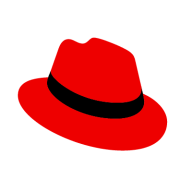

Sysdig Secure and Red Hat Advanced Cluster Security for Kubernetes are comprehensive security solutions for Kubernetes environments. Users are happier with the pricing and support of Sysdig Secure, but Red Hat Advanced Cluster Security for Kubernetes is often deemed superior due to its feature set, making users feel it’s worth the price.
Features: Sysdig Secure is highly appreciated for its deep visibility, runtime security features, and robust monitoring and forensics. Red Hat Advanced Cluster Security for Kubernetes stands out for its integration capabilities, threat detection features, and comprehensive policy management and compliance features.
Room for Improvement: Users suggest enhancing usability, expanding cloud platform support, and focusing on platform versatility for Sysdig Secure. Red Hat Advanced Cluster Security for Kubernetes users propose better scalability, improved documentation clarity, and enhancing ease of use.
Ease of Deployment and Customer Service: Sysdig Secure is praised for its straightforward deployment and responsive customer service, which users find highly efficient. Red Hat, while offering powerful deployment models, faces criticism for a steeper learning curve and slower support response times.
Pricing and ROI: Sysdig Secure’s pricing structure is considered more competitive, providing better upfront value and a faster ROI according to users. Red Hat Advanced Cluster Security for Kubernetes, despite higher costs, is viewed as offering significant long-term value due to its extensive feature set, with users acknowledging a higher ROI that justifies its premium pricing for comprehensive security management.
| Product | Market Share (%) |
|---|---|
| Sysdig Secure | 2.7% |
| Red Hat Advanced Cluster Security for Kubernetes | 2.2% |
| Other | 95.1% |


| Company Size | Count |
|---|---|
| Small Business | 6 |
| Midsize Enterprise | 2 |
| Large Enterprise | 4 |
| Company Size | Count |
|---|---|
| Small Business | 5 |
| Midsize Enterprise | 2 |
| Large Enterprise | 3 |
Red Hat Advanced Cluster Security for Kubernetes is a Kubernetes-native container security solution that enables your organization to more securely build, deploy, and run cloud-native applications from anywhere. With its built-in security across the entire software development life cycle, you can lower your operational costs, reduce operational risk, and increase developer productivity while improving your security posture immediately. In addition, Red Hat Advanced Cluster Security integrates with security tools and DevOps in an effort to help you mitigate threats and enforce security policies that minimize operational risk to your applications. It also enables you to provide developers with actionable, context-rich guidelines integrated into existing workflows, along with tooling to support developer productivity. The solution is suitable for small, medium, and large-sized companies.
Red Hat Advanced Cluster Security for Kubernetes Features
Red Hat Advanced Cluster Security for Kubernetes has many valuable key features. Some of the most useful ones include:
Red Hat Advanced Cluster Security for Kubernetes Benefits
There are many benefits to implementing Red Hat Advanced Cluster Security for Kubernetes. Some of the biggest advantages the solution offers include:
Reviews from Real Users
PeerSpot user Igor K., Owner/Full Stack Software Engineer at Maraphonic, Inc., says, “The solution allows teams to create their own virtual spaces and share resources. The most valuable feature is the ability to share resources.”
In the cloud, every second counts. Attacks move at warp speed, and security teams must protect the business without slowing it down. Sysdig stops cloud attacks in real time, instantly detecting changes in risk with runtime insights, a unique AI architecture, and open source Falco. Sysdig delivers live visibility by correlating signals across cloud workloads, identities, and services to uncover hidden attack paths. By knowing what is running, teams can prioritize the vulnerabilities, misconfigurations, permissions, and threats that matter most. From prevention to defense, Sysdig helps enterprises move faster and focus on what matters: innovation.
Sysdig. Secure Every Second.
We monitor all Container Security reviews to prevent fraudulent reviews and keep review quality high. We do not post reviews by company employees or direct competitors. We validate each review for authenticity via cross-reference with LinkedIn, and personal follow-up with the reviewer when necessary.